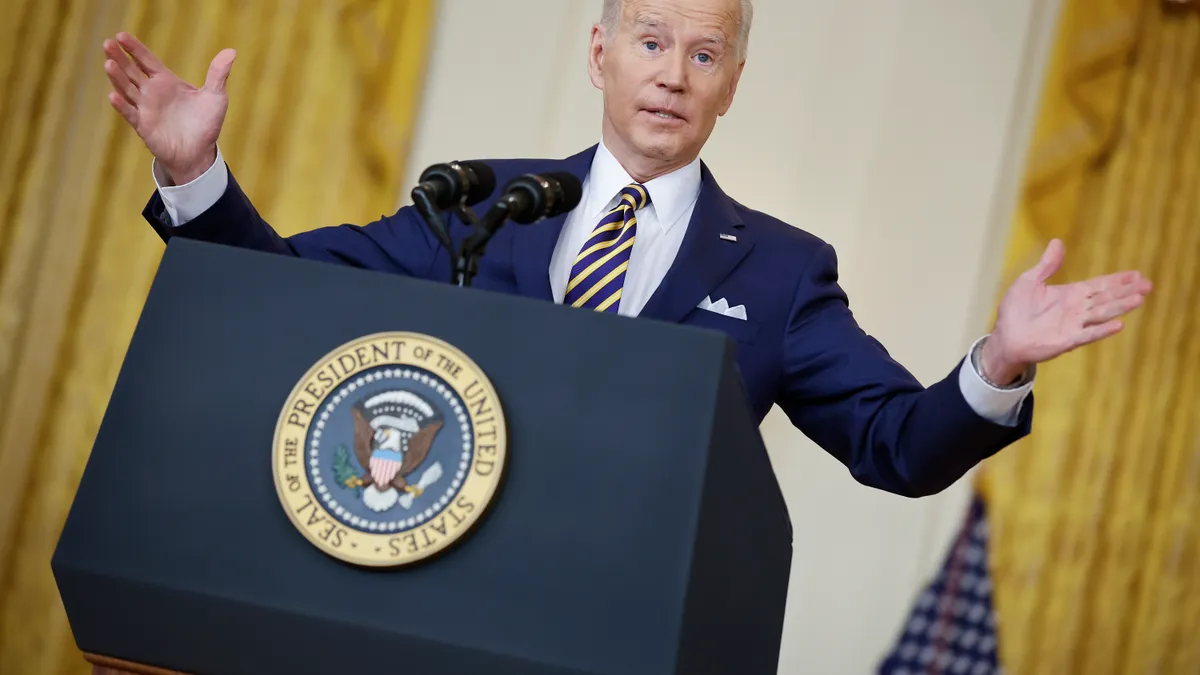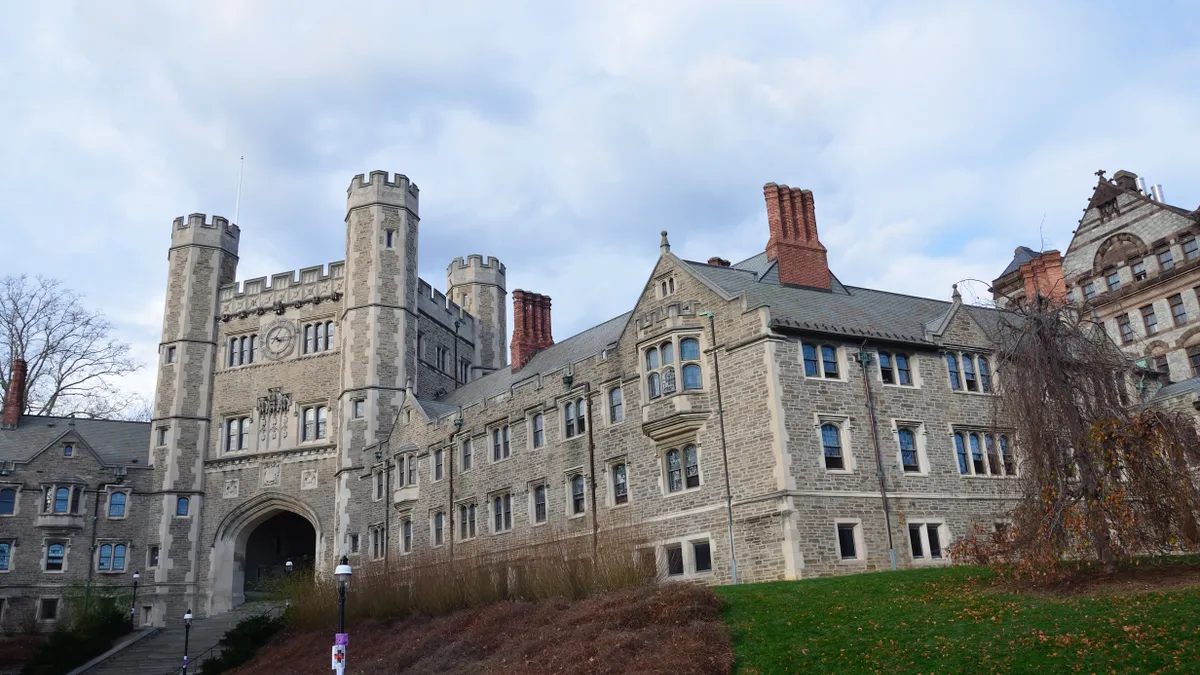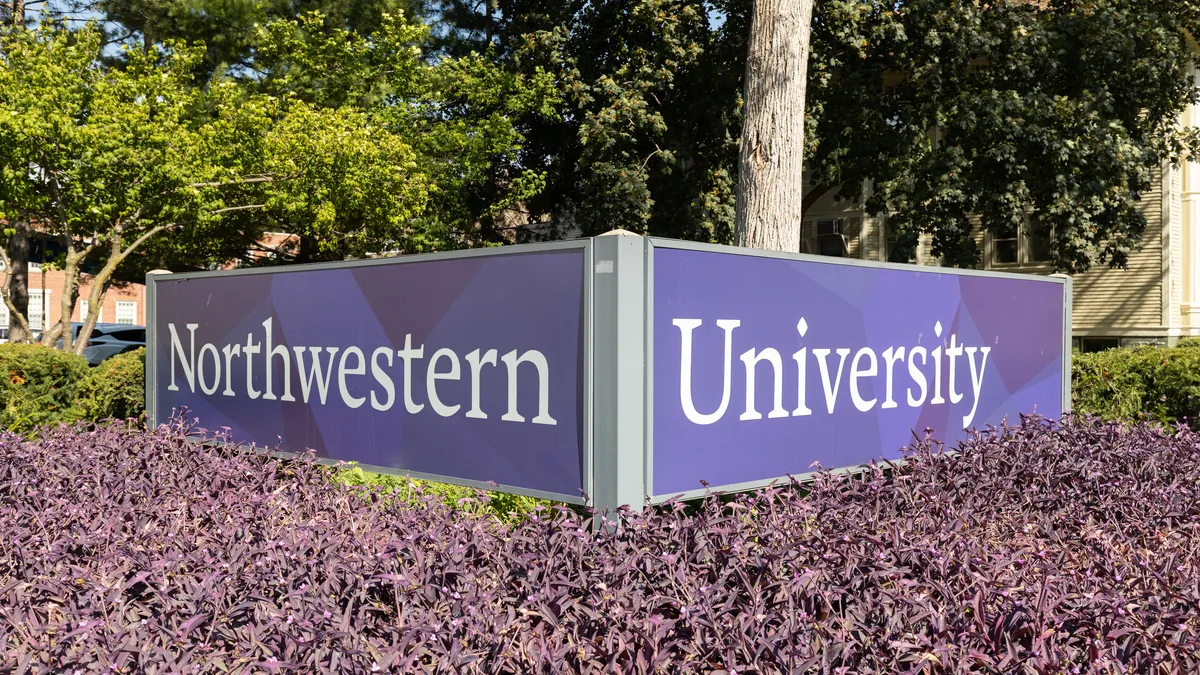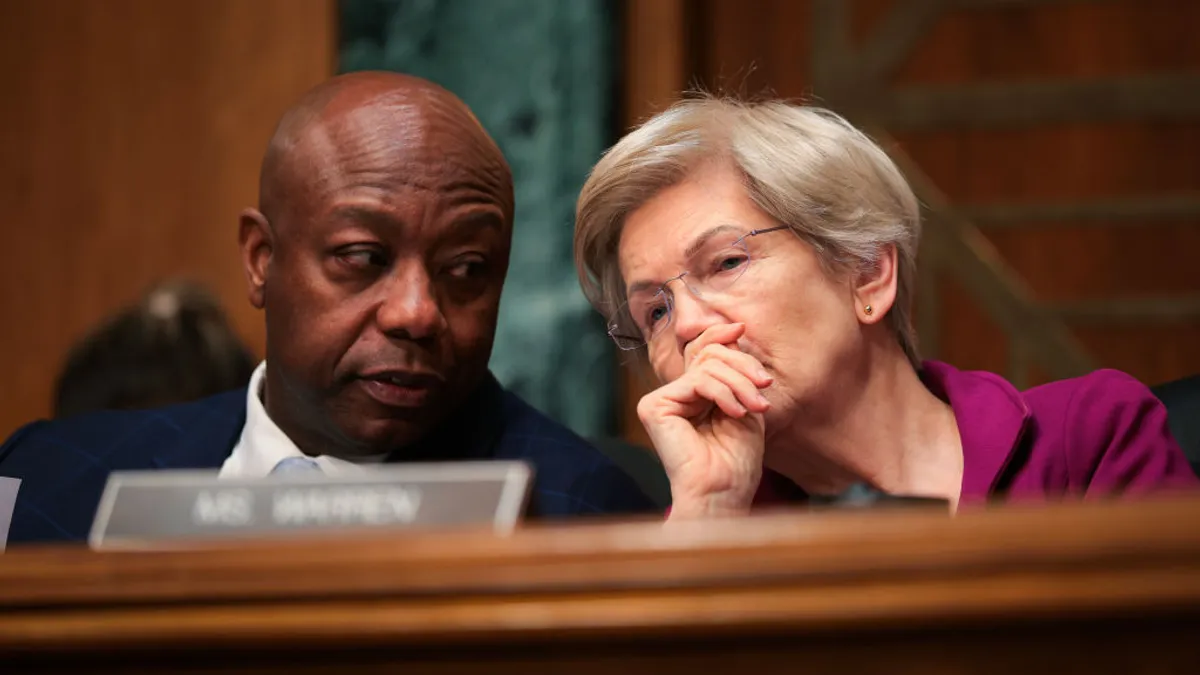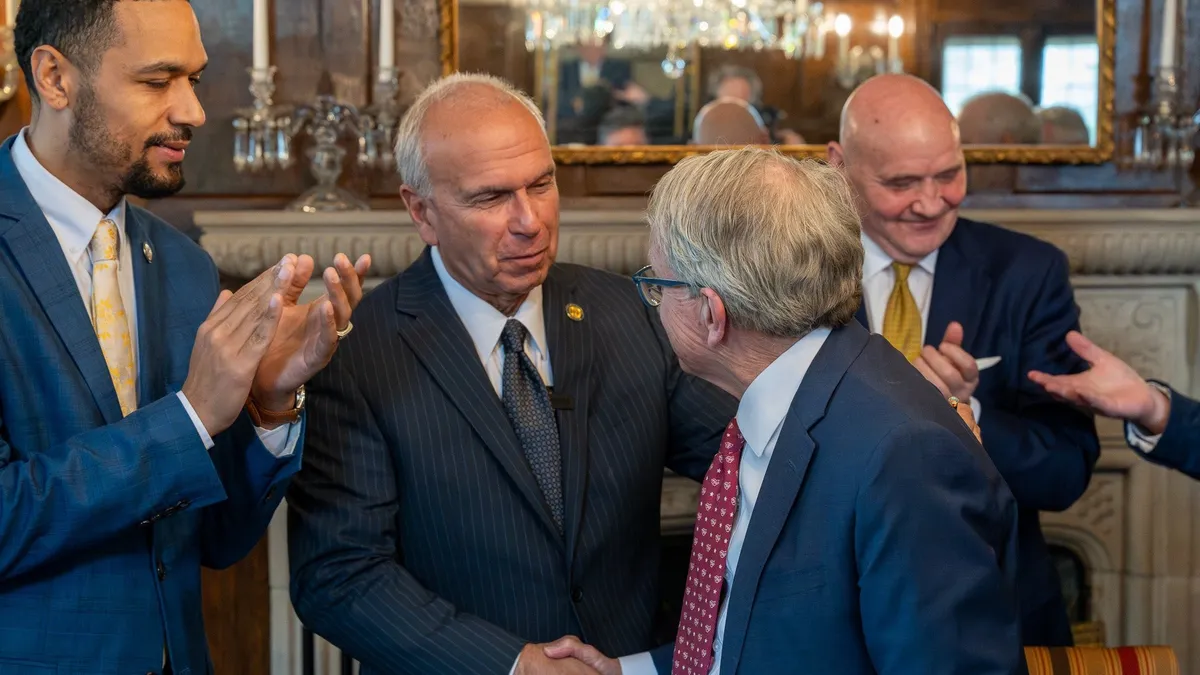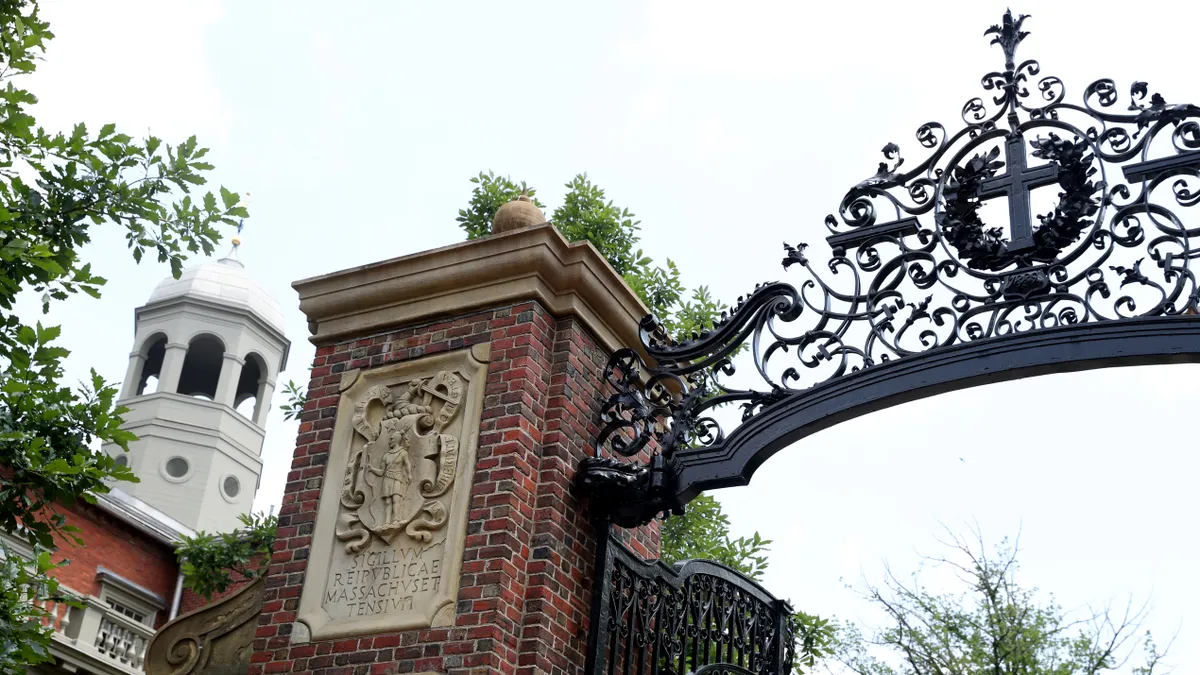Avery M. D. Davis is a Ph.D. student in education at Johns Hopkins University. His research centers on postsecondary innovation and students' financial aid experiences.
And just like that … it's Valentine's Day in 2022. America is over a year into the Biden-Harris administration, so how's the relationship going for higher education? Has President Joe Biden kept his vows? Is it time to break up the agenda?
After Biden shelved tuition-free community college, James Corden joked: "It's not a total loss. A career politician promised you something, you voted for it, and now it's not gonna happen, which is, in many ways, a free education."
This is not the only pledge in which Biden appears to have overpromised on the campaign trail. Beyond free community college, Biden's priorities included: doubling Pell Grants, making four-year public colleges tuition-free for families with incomes less than $125,000 and addressing student debt.
To date, only Public Service Loan Forgiveness applicants and those defrauded by for-profit institutions have been aided. Merely $15 billion of student loan debt has been discharged from the total.
I'll do the math for you: That's less than 1%. Even Biden's most guarded campaign position was to forgive up to $10,000 per student, costing around 24% of the total Federal Student Aid loan portfolio at the time, which was $1.55 trillion.
Indeed, the political climate is tough. The administration is working with a split Congress (plus a divided Democratic Party needing marriage counseling) and a catalog of challenges like COVID-19, environmental issues and inflation. That said, higher education is getting the short end of the stick, and future students will suffer accordingly.
Today, only those attending community colleges are receiving enough grant aid to cover tuition and fees, but they still pay for expenses like food, housing and transportation. Meanwhile, in-state students at four-year public institutions pay an average of $19,230 for tuition and expenses, after grant aid. It only goes up from there for those studying out of state and at private colleges. Changes are clearly warranted.
University of Virginia President James Ryan has argued, "The best reform in the world, on paper, will be useless without sufficient political support to sustain its implementation." It's just to believe in righteous fights. Yet, public policy needs consensus. We are otherwise wasting time and money.
The Biden-Harris proposals were well-intentioned but never practical. To reach agreement, their plan requires subtle and stark changes. This includes doubling down on Pell Grants, tabling free college and tackling student loans.
Let's start with Pell Grants, the largest source of grant aid from the government. Scholars have noted that this program's popularity stems from the no-strings-attached framework for funds that support low-income students (leans liberal) and the programmatic nature of school vouchers (leans conservative). Both the American Council on Education's president, Ted Mitchell, and Wellesley College economist Phillip Levine maintain that doubling Pell Grants will increase access for low-income students and reduce loan borrowing. Seems like a no-brainer.
How much did the federal government spend on Pell in 2020-2021? A total of $26 billion. How much did the government increase the defense bill beyond Biden’s request? A whopping $25 billion. The old adage is to underpromise and overdeliver, just not like this.
Second, let's talk free college. Statistical simulations suggest that free community college would increase the probability of earning an associate degree for those already enrolling in two-year schools. They also suggest free community college would induce some students to enroll who would not have. But the policy also seemingly prompts students to switch from four-year to two-year institutions — and thus, decreases their chances of earning a bachelor's degree.
High-achieving low-income students already tend to apply to less-selective schools, despite being well-qualified for admission elsewhere. Potentially exacerbating this phenomenon should give one pause. After all, bachelor's degree holders earn more, on average, than those with associate degrees.
What about loan forgiveness? Since day one, Biden has extended the Trump administration's pause on loan repayments and interest accrual, now through May 1. This has meant temporary relief to millions of borrowers, myself included. Additionally, the current administration has helped some by counting prior payments toward Public Service Loan Forgiveness requirements and by reconsidering previously denied applicants. Broader work is still needed.
While legal scholars disagree on Biden's executive authority to forgive loans, it seems that such action would ultimately succeed. Lawsuits would likely be ill-fated, and a reversal would be political suicide. Although I support long-term alternatives to blanket forgiveness, Biden has nothing to lose by trying. It's hard to see Democrats losing midterm elections after such an event; if they gain seats in Congress, "consensus" gets easier for other initiatives.
With any effort, tuition accountability must accompany loan forgiveness and increased Pell Grants. While this is the first year in some time that inflation has significantly outpaced college sticker prices, historic tuition increases remain staggering. Accountability is easier said than done, but complaints abound regarding college costs.
The answer may be an assorted arrangement. Scholars, policymakers and citizens will need to look at solutions that don't harm students. Perhaps revisions to gainful employment requirements across all majors, endowment taxes on colleges raising tuition beyond inflation and risk sharing (i.e., putting colleges on the hook for default rates) could be explored.
But how's today's relationship between Biden and higher education? If you ask the hundreds of thousands of former borrowers newly relieved through Public Service Loan Forgiveness, it's a match made in heaven. For the millions that temporarily don't have to make payments or accrue interest, it's love-hate. For those pursuing college for the first time, affordability remains mostly out of reach.
The government cannot ignore higher education when the solutions have such societal advantages. One of the beautiful things about the U.S. is its diversity, the very dynamic lending itself to tough negotiations. It was Prince — the artist and love symbol — who asked: "Why do we scream at each other?"
Bureaucratic boondoggling is doing a disservice to aspiring learners. The clock on the midterms should serve as a wake-up call, moving politicians from arguing to action. Let's hope they campaign on practical promises.


